Under the guidance of Diego Mallada, chief information officer for digitalisation, Gestamp is emerging as a leader in integrating digital networks and AI across its supply chain. Gestamp, an expert in metal automotive components and body-in-white, is revolutionising automotive supply chain management through advanced industry 4.0 strategies, emphasising federated networks and superior data quality.
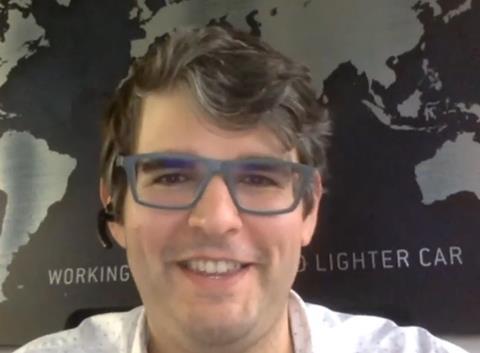
For automotive logistics, the concept of connectivity has transcended its traditional bounds, where digital networks have now become the backbone of innovation and collaboration. For some, the idea of connectivity is simply about connecting systems, but this limits understanding the true potential of digital networks, and the capabilities they hold for automotive logistics. Components maker Gestamp is able to see beyond this parochial view.
Evolving the applications of networks to their next logical step, Gestamp seized on the idea of ‘the federated network’, where separate networks or locations share resources. The concept of a global, federated software framework is primarily about people, according to Diego Mallada, who spoke to Automotive Logistics in an video interview after speaking at the first Automotive Logistics & Supply Chain Digital Strategies conference last year.
“What we are trying to do is to create global communities,” he says. “And these communities are made up of the experts in each of their respective technology areas.”
Through this global federated network, Gestamp is creating a world-wide digital environment where people from all of its operative regions are able to contribute, and to do so “without any frontier.” In other words, and moving against popular assumptions, this federated network is focused on building global collaboration in automotive supply chains. The company may, for example, have specialists in China who have the expertise to contribute to the creation of mobile applications. Through the network, these experts are connected to people in Germany, Spain or potentially anywhere else in the world.
It is crucial that Gestamp’s logistics data is standardised and intelligible across all its locations – Diego Mallada, Gestamp
Mallada says the federated network is the grounds for a kind of open-source community, “which further allows Gestamp to boost global reskilling in every area of expertise.” The applications of this open-source community are almost endless. It also allows for intimate experience and work throughout our global plant footprint, because in the end our industry 4.0 strategy is all about transformation of all of our plants around the world.”
That is also one of the reasons that Gestamp joined the Catena-X project in 2023, with a committment to exchange data in a trusted, secure way. For Gestamp and Mallada, implementing federated networks in automotive logistics holds the keys to enhancing people as well as systems.
Data quality and semantics in digital networks
Gestamp has over 100 plants and many networks, with no shortage of data to be leveraged. The question is, how is that data captured, interpreted and implemented to enhance industry 4.0 strategies in automotive supply chain management? A recurring theme, and one which data-driven companies would do well to understand, is that of data quality and semantics as the virtual “backbone” of digital networks. For the federated network to be truly realised, it is crucial that Gestamp’s logistics data is standardised and intelligible across all its locations. Improving data quality and standardisation in supply chains is critical to the global autommotive ecosystem.

Mallada points out that achieving this data standardisation is no easy task, but Gestamp is proactively working on developing its own solutions. In logistical terms, for example, enterprise resource planning (ERP) data, cannot be considered at the expense of data pertaining to the Internet of Things (IoT), or aspects of edge, cloud, or any number of industrial processes, “many of which are using different protocols.”
Gestamp also has some aspects of the architecture that are more “real-time”, and operating ’closer’ to industrial processes. “We have different infrastructures,” he says, “so not everything is at the same stage.” This means that standardising data to achieve semantic homogeneity across all layers “requires the collaboration of our industrial experts, as well as all the parts of data governance, and the oversight of our data office so that all of these components are connected and working together.”
Gestamp’s innovative approach to supply chain data: the global lake house model
Another key target concerns further increasing data integration and visibility across the wider supply chain. Alongside building the necessary global framework through software design to allow for interoperability, Gestamp is also in the midst creating a global “lake house” for supply chain data.
“The data from IoT, for example; gathered from machines, feeds into the broader picture about the entire industrial process which then bolsters data quality and the wider logistics map”
According to Mallada, this structure lies on a Venn diagram between Gestamp’s data office - on the one side - and Gestamp’s teams, such as the infrastructure team, on the other. This model is helping Gestamp to internally exchange data between departments and removing any potential data silo.
“This is also how we exchange data with other members across the supply chain”, says Mallada. The architecture allows for end-to-end supply chain control. From a technical perspective, there is normally a disconnect between real-time (or streaming) data, with data from ‘lagging’ components. This can be an issue. But Gestamp is able to read that (very large) data “in batch” while achieving robust data governance and security, allowing for digital synchronicities that make for a streamlined data environment.
“We use machine learning operations, technologies and artificial intelligence lifecycles that we then implement into production systems”
And with all this data, cybersecurity becomes a necessary focal point. Mallada says that cybersecurity is central to Gestamp’s entire strategy, and a disconnected supply chain poses many risks, and lost opportunities. Cybersecurity challenges in digital supply chain networks are a rising concern. As Gestamp works more with initiatives such as Catena X, it hopes to strengthen data trust and security, allowing for enhanced traceability across the supply chain. “The data from IoT, for example; gathered from machines, feeds into the broader picture about the entire industrial process which then bolsters data quality and the wider logistics map. We can trace the ID of parts across the entire stream.”
Leveraging AI for Gestamp’s supply chain efficiency and decision-making
But in modern automotive logistics, one cannot discuss data without discussing Artificial Intelligence (AI). Mallada says that 70-80% of the time devoted to developing AI algorithms is spent on data preparation and quality control, and Gestamp uses the same strategy for AI as it does for software development. So what is the role of machine learning in supply chain optimisation? “We use machine learning operations, technologies and artificial intelligence lifecycles that we then implement into production systems.” The company also uses AI for ‘clustering’, which is all about determining optimal paths across Gestamp’s global plant footprint. “We also want our plants to be able to learn from those that are performing better in other parts of the world, as mentioned, so we are further in the process of training AI models and algorithms that can help us bring that about.”
Looking to the future: Gestamp, Catena-X and connected Supply Chains
Big data can solve big problems, but orienting to the future, Mallada volunteers that there are also big challenges. Firstly, the federated ecosystem is, just like a natural ecosystem, one that is not static, and so needs continuous improvement. Mallada says it’s important for the communities connected through the system to keep exchanging data, and “connecting the dots to see how we can improve things internally, externally and globally.” He also thinks that Catena X will begin to have more use-cases in 2024. “In fact, we are talking about developing brand new use-cases for Catena X, where it’s not only about how a single organisation is internally doing things with the data - it’s about how we exchange the data to change the whole.”
Watch the complete video interview of Diego Mallada, IT digital technology director from Gestamp, in conversation with Automotive Logistics chief content officer, Christopher Ludwig.
You can find more highlights from Automotive Logistics and Supply Chain 2023, which took place in Munich. The next event in the digitalisation series will be Automotive Logistics and Supply Chain North America in Nashville, June 26-27.
Topics
- AI & Predictive Analytics
- Battery Supply Chain
- Companies
- Data Integration & Interoperability
- Digitalisation
- Editor's pick
- Europe
- features
- Gestamp
- Inbound Logistics
- Kaizen & Continuous Improvement
- Lean Logistics
- Materials handling
- News and Features
- Other news
- Quality Control
- Region
- Suppliers
- Supply Chain Focus
- Supply Chain Planning
- Topics
- Track-and-trace
Gestamp redefines supply chain management for industry 4.0
- 1
 Currently reading
Currently readingGestamp redefines supply chain management for industry 4.0
- 2


























![Global[1]](https://d3n5uof8vony13.cloudfront.net/Pictures/web/a/d/s/global1_726550.svgz)




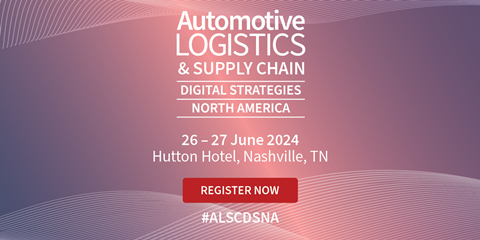
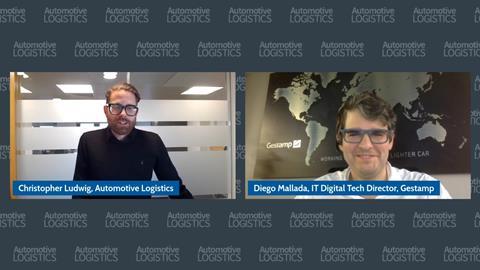



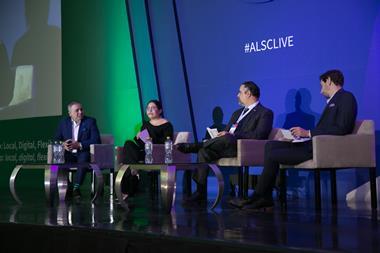
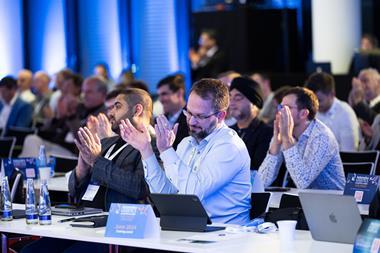
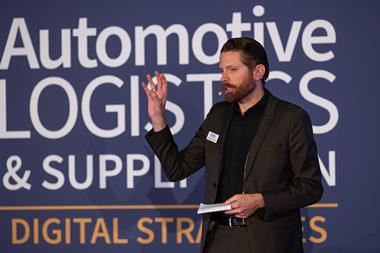




No comments yet